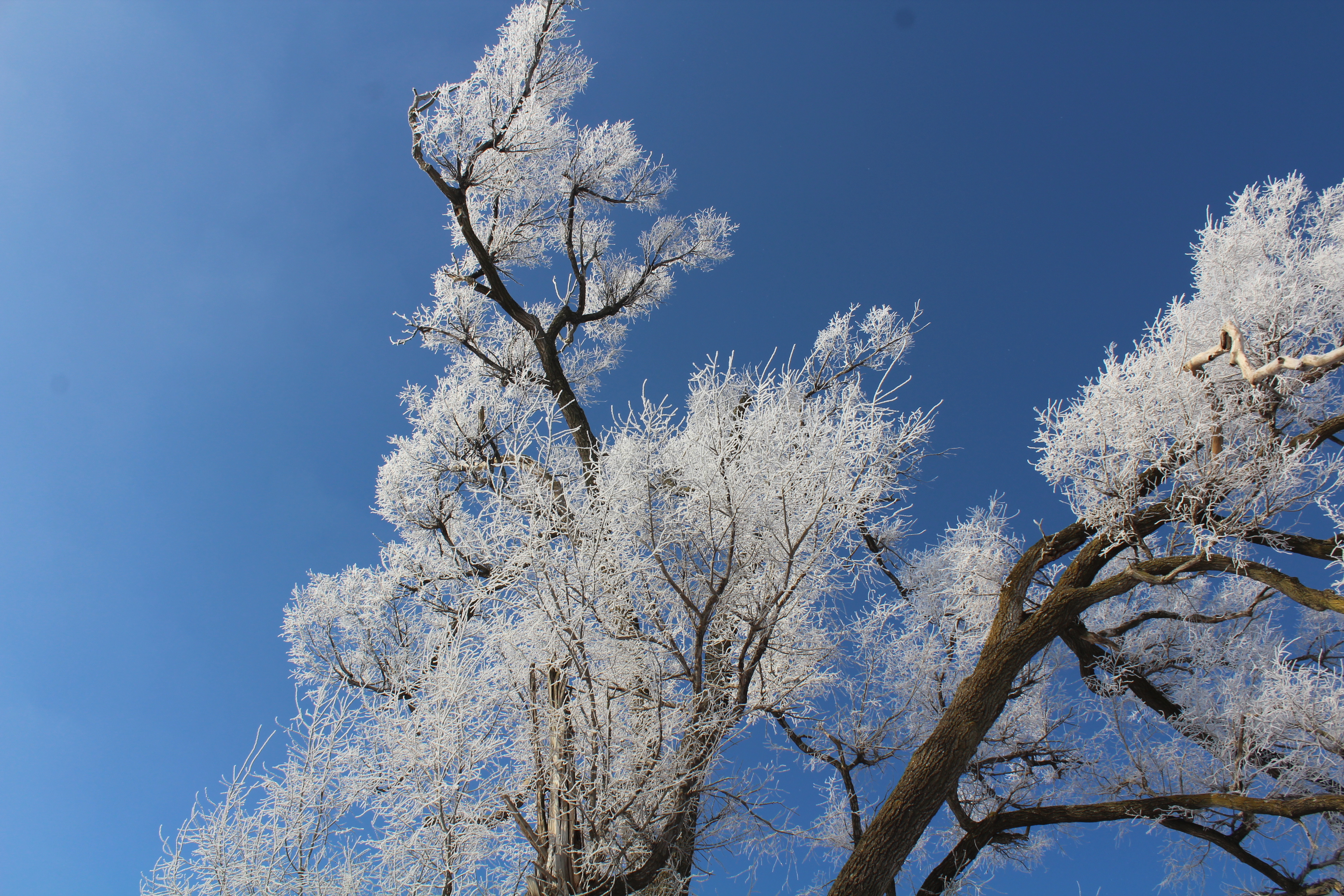On a January night, the air is still. The overnight temps hold in the teens and twenties, and the humidity is close to 100%. The conditions are perfect for one of Owl Acres’ beautiful winter creations–hoar frost. The word “hoar” is archaic but means “grayish white; gray or gray-haired.” It’s like wisps of fog frozen on the trees. It gives the landscape an ethereal touch until, most days, the sun comes up and melts it away. At a distance, it looks like the fuzz of an old man’s beard coating every surface. If you look closely at it, you see feathery creations of ice crystals in a variety of shapes. On a still night, the ice crystals form when water vapor suspended in the air touches a frozen surface like a twig and freezes. Once the initial ice crystal forms, it grows, collecting more water vapor that freezes into ice crystals. This process creates tiny, intricate sculptures of ferns, feathers, needles, cups and more.
Two weeks before this luxurious coating on the trees, snow in its pure white form, light and fluffy, drifted down to cover every horizontal surface with several inches of powder. Rabbits, raccoons, mice, opossums and deer left their footprints in the pristine blanket. Another beautiful winter scene.
And then, a bomb cyclone blew across Owl Acres dropping temps to 11 below zero. Winds gusting to 50 miles per hour picked up the snow and carried it in a whirling, driving mass of white. Where the airborne snow met with an obstacle, it dropped and formed drifts, closing the road in some places. A week later it was 70 degrees warmer, the snow was melted, and the bomb cyclone was history. None of this was unusual for winter on Owl Acres except the terminology. Blizzard, yes. We’ve had blizzards forever. Wind whips snow into a disorienting frenzy. You can’t see where you’re going because everything is undifferentiated white. Cars go in the ditch. People get stranded. Wildlife hunkers down till it’s over. But what is a “bomb cyclone”? Why is it called “bomb”? I don’t remember hearing that term before last year. Come to think of it, we’ve introduced several new weather terms into my vocabulary over the past few years—derecho, bomb cyclone, atmospheric river, polar vortex, thunder snow. It may be that Owl Acres has experienced these storms for thousands of years and I just didn’t have names for them.
So let’s start with bomb cyclone. A cyclone is a big storm caused by a shaft of warm, moist, low-pressure air meeting up with cold, dry, high-pressure air. As the warm air in the center rises, the pressure drops, sucking the cold, high-pressure air into the low-pressure area. That creates wind. As the warm moist air rises, it cools, creating snow for that wind to blow around. The term “bomb” cyclone, or bombogenesis, refers to how fast the air pressure drops in the center of the storm. If it drops 24 millibars (a measure of air pressure) in 24 hours, it creates a very strong storm with a tremendous amount of energy. Weather scientists compare it to a bomb going off so they call it a bomb cyclone. this rapid drop was named “bombogenesis” in 1980 by weather scientists to describe the rapid, explosive formation of the storm. The storm brings Arctic air, high winds, and snow. It creates blizzards and “thunder snow.” Thunder snow is an unusual phenomenon where thunder and lightning occur in the middle of a snowstorm.
During the storm, the birds flocked to the bird feeder. It provided a ready source of the fuel they needed to survive the below-zero temperatures. We, on the other hand, were snowed in. We were warm and cozy with the wind howling outside and a lovely fire crackling in the fireplace.
Photo by author
